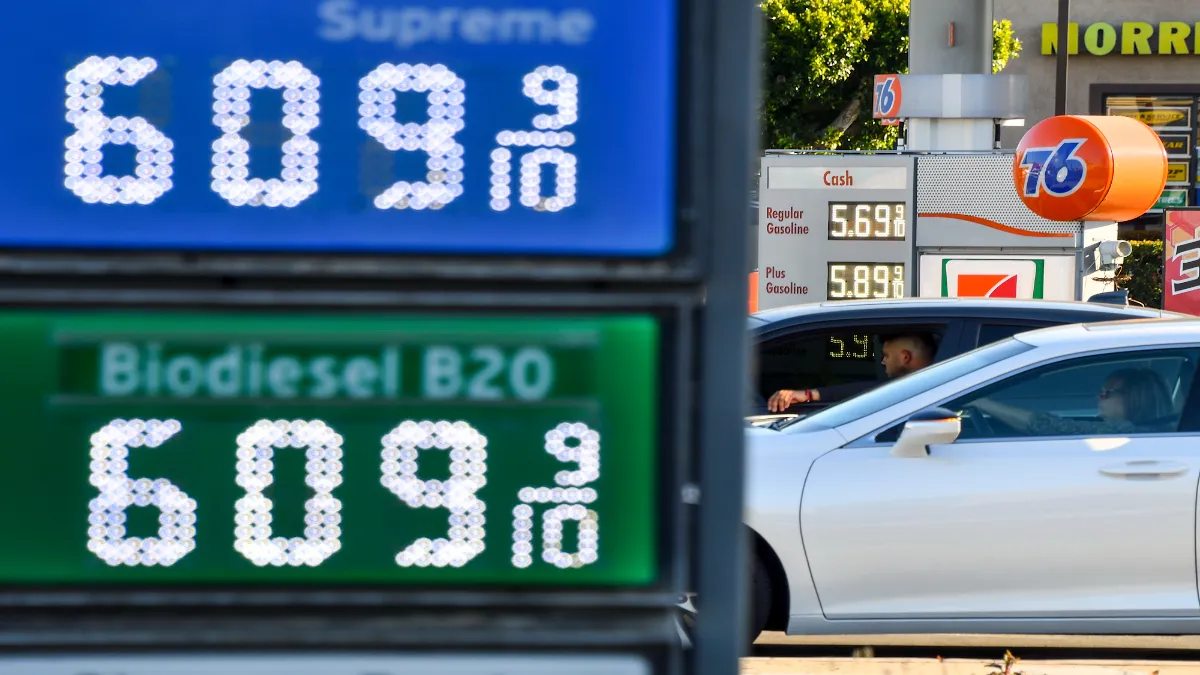
Advertisement
If you’ve recently filled up your gas tank in California, you may have experienced a case of sticker shock. Gas prices throughout the state are soaring, far surpassing the national average.
As of Tuesday, California’s average gas price stood at $5.37 per gallon, compared to the national average of $3.60. In the bustling Los Angeles-Long Beach metro area, drivers are shelling out a few pennies less on average, with a gallon of regular self-serve gasoline costing around $5.34. However, this still marks an increase of 18 cents from last week and approximately 40 cents from last month, according to the American Automobile Association (AAA).
While gas prices are on the rise across the country, California is experiencing a particularly rapid increase. The state’s average price for regular gas has surged by 25 cents from last week and almost 50 cents from a month ago, as reported by AAA.
A variety of factors contribute to California’s skyrocketing gas prices. A tight oil market, stemming in part from attacks on commercial ships in the Red Sea and production cuts in other countries, has driven fuel prices above average. The U.S. Energy Information Administration (EIA) projects that this trend will persist, with global events such as the Russia-Ukraine conflict adding further uncertainty to oil balances and crude prices in the United States.
The war between Russia and Ukraine has intensified in recent months, with Ukrainian drone attacks targeting Russia’s refineries and oil terminals. While concerns about the impact of these attacks initially spiked oil prices, recent developments have seen a partial alleviation of these concerns, leading to a settling of gas prices into a pattern similar to last year’s slow and steady seasonal increase, according to AAA spokesperson Andrew Gross.
Additionally, California’s gas prices are influenced by the transition to a different fuel blend during warmer weather months. Environmental regulations mandate a summer-grade gasoline that is less prone to evaporation, prompting refiners to replace cheaper, more evaporative components with alternatives that meet regulatory requirements.
But we’re here to help you find the cheapest options!
